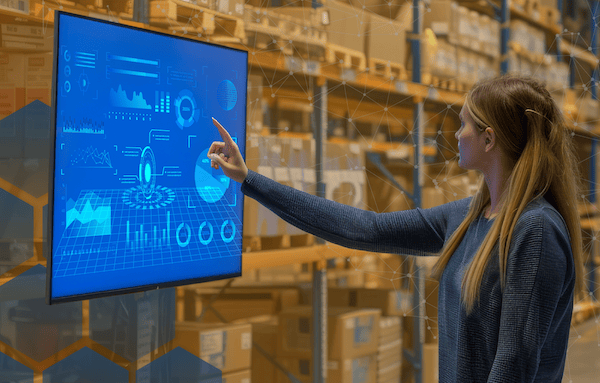- Warehouse Wisdom. Weekly.
- Posts
- Warehouse Wisdom. Weekly. 08/01/2025
Warehouse Wisdom. Weekly. 08/01/2025
Only the most relevant news for SMBs to improve logistics – picked, packed, and delivered without the bias.

Happy Friday!
While everyone obsesses over Trump's August 1st tariff deadline, the real power shift is happening in regulatory boardrooms where unions just discovered they can kill any $85 billion merger by weaponizing safety concerns. SMART Transportation isn't opposing the UP-Norfolk Southern deal because of genuine safety fears—they're proving that labor can now turn every corporate consolidation into a hostage negotiation.
This strategic awakening explains why UPS burned $85 million trying to eliminate USPS partnerships only to crawl back begging for the same deals they rejected, and why Aurora's autonomous trucks are now working night shifts while universities frantically retool curricula for AI management.
Global Logistics
Unions weaponize safety concerns to kill mega-mergers

President Trump declared Wednesday that "THE AUGUST FIRST DEADLINE IS THE AUGUST FIRST DEADLINE" and will not be extended, threatening tariffs as high as 50% on Brazil, 35% on Canada, and 30% on EU and Mexican goods. Commerce Secretary Lutnick called August 1st a "hard deadline," while Treasury Secretary Bessent suggested tariffs could last "anywhere from a few days to a few weeks" if countries negotiate in good faith—which is Washington-speak for "we have no idea what happens next, but it sounds tough."
In earnings reality check, UPS reported Q2 revenue and earnings declines amid trade environment uncertainty, while Old Dominion executives said "clarity is growing" on freight recession recovery despite falling profits and revenue. The disconnect between tariff-driven import surges and carrier performance suggests that even panic buying can't fix fundamental demand softness—The lesson: temporary policy chaos makes terrible business strategy.
Meanwhile, SMART Transportation Division announced opposition to the $85 billion Union Pacific-Norfolk Southern mega-merger, citing UP's "troubling safety record" and allegations of harassment against workers. The nation's largest rail union will challenge the deal before the Surface Transportation Board, while BLET separately complained to Trump about UP using Mexican train crews at the border. Here's what everyone's missing: this isn't really about safety—it's about unions discovering they hold unprecedented leverage when infrastructure consolidation meets political chaos. Translation: labor just realized they can kill any deal by weaponizing regulatory review processes, turning every merger into a hostage negotiation.
Stop Drowning in Market News. Focus On Making Money.
Every day: 847 financial headlines, 2,300 Reddit stock mentions, 156 Twitter trading threads, 12 IPO updates, 94 crypto developments.
Your problem isn't lack of information; you have too much.
While you're scanning headlines wondering what matters, profitable trades slip by. The signal gets buried in noise.
What if someone did the heavy lifting for you?
Stocks & Income reads everything:
Twitter traders
Reddit buzz
IPO announcements
Crypto insider takes
Crowdfunding opportunities
Market news
Then we send you only what can actually move your portfolio.
No fluff. No useless news. Just actionable stock insights in 5 minutes.
We track every source so you don't have to. You get the 3-5 opportunities worth your time, delivered daily.
Stop wasting time on useless “investing news” and start thinking critically about real opportunities in the stock market.
Stocks & Income is for informational purposes only and is not intended to be used as investment advice. Do your own research.
Warehouse Tech
Training humans to manage their replacements

While shippers demand advanced tech and carriers struggle with legacy systems, academia is finally catching up to industry reality. Universities are retooling supply chain management programs with AI, analytics, and automation courses as companies demand tech-savvy employees who can leverage real-time data and digital tools. Iowa State added ERP system courses, Marquette received $1 million from Omron for an Advanced Automation Lab, and Wisconsin requires all business undergraduates to take foundational AI courses—The subtext: we finally realized students need to understand the robots before managing them.
Aurora's breakthrough validates the push toward automation: Aurora Innovation expanded to nighttime driverless operations on its Dallas-Houston lane while opening a Phoenix terminal, surpassing 20,000 driverless miles with three autonomous trucks. The company's FirstLight Lidar can detect objects 450 meters away and identify hazards 11 seconds sooner than human drivers, while nighttime operations address the 37% of fatal truck crashes occurring after dark—proving that robots don't get tired, distracted, or need bathroom breaks.
And in warehouse automation reality, Sumitomo Drive Technologies USA deployed AutoStore with 14 robots, 22,872 bins, and 11 autonomous forklifts orchestrated by Swisslog's SynQ software platform at their Virginia facility. The system delivers space savings that avoid facility expansion costs while improving pick accuracy and working conditions—What this really means: we're investing in robots and people simultaneously, not choosing between them.
Rate Your 3PL: The Good, Bad & Ugly
Finally, a 3PL review platform that isn't pay-to-play. We're building a trusted resource where brands and manufacturers can find honest feedback on third-party logistics companies—based on real experiences, not sponsored content.
Whether your 3PL partnership was a disaster or a dream, your insights help others avoid costly mistakes and find reliable operators.
This is peer-to-peer intelligence that actually matters when you're betting your fulfillment on someone else's warehouse.
Logistics Vitals
Tech dreams, budget reality

While Trump demands trade policy clarity and unions resist mega-mergers, shippers are creating their own impossible expectations. A Werner Enterprises survey reveals 87% of companies rate carrier technology capabilities as extremely or very important when selecting transportation providers. Despite technology being a premium service differentiator, cost constraints remain the biggest implementation roadblock, while legacy systems and change management create additional barriers—proving that everyone wants Silicon Valley capabilities with Rust Belt budgets.
Shipper demands focus on real-time visibility (61%) followed by dashboards and mobile access (49% each)
Technology integration essential for 39% of shippers when selecting providers, driving API and TMS requirements
Cloud platforms enable shipment-level emissions visibility for Scope 3 reporting through solutions like Salesforce Net Zero
Legacy systems create barriers with outdated infrastructure and change management challenges
Premium carriers deploy unified digital platforms centralizing tracking, invoicing, and freight management
Small Parcel Freight
UPS learns partnerships exist for a reason

The same labor tensions complicating rail mergers are playing out across transportation modes. ATA and OOIDA clashed again over driver shortage reality during Senate subcommittee hearing, with ATA's Chris Spear citing 60,000 driver deficit and 19% pay increases during freight recession as proof, while OOIDA's Lewie Pugh called it a "thoroughly debunked myth." Teamsters' Sean O'Brien noted 80-90% annual turnover at truckload carriers versus 10-15% at unionized LTL firms—proving that whether you have a "shortage" or "retention problem" depends entirely on how you treat drivers.
UPS's operational about-face shows how quickly tariff uncertainty forces strategic reversals. UPS "reengaged" with USPS on Ground Saver delivery after in-house operations cost $85 million more than expected in Q2 despite 23% volume decline. The service formerly known as SurePost broke up with USPS earlier this year over cost and reliability concerns, but new Postmaster General David Steiner brings "excess capacity" to negotiations—In plain English: we tried to do it ourselves and learned why partnerships exist.
Meanwhile, Amazon's first logistics hire explains why speed decides retail winners as most retailers remain trapped in siloed teams and legacy processes despite admiring Amazon's success. Manish Kapoor notes that "Amazon is a technology company that happens to do logistics" while most retailers are "retail companies that use technology as an enabler," with last-mile economics requiring Manhattan drivers earning $50/hour to compete against seven-minute toothbrush delivery in India—Bottom line: logistics infrastructure determines retail destiny more than product selection.
Marketplace
Trade war disguised as consumer protection

Trump's tariff threats aren't happening in isolation—regulatory walls are closing on Chinese e-commerce globally. EU regulators accused Chinese retailer Temu of failing to prevent illegal product sales under the Digital Services Act, following a "mystery shopping exercise" that found non-compliant baby toys and electronics on the platform. With 92 million EU users, Temu faces potential fines up to 6% of global revenue for inadequate risk assessment that relied on "general industry information" rather than marketplace-specific data—which is regulatory-speak for "selling cheap stuff from China requires more than wishful thinking about product safety."
The protectionist escalation reveals a coordinated squeeze: Mexico raised import taxes on small online purchases from Shein and Temu from 19% to 33.5% as negotiations to avoid US tariffs intensify before August 1st deadline. The move targets Chinese retailers using Mexico as a "back door" to US markets, while products from US and Canada continue paying 17% duty—proving that trade war spillover effects hit consumers in every direction.
And in earnings anticipation, Wall Street expects Amazon to report $162 billion Q2 revenue despite tariff headwinds, with analysts raising price targets on automation efficiencies and AWS AI growth. UBS calls Amazon the "most-coiled" Big Tech stock, while Morgan Stanley sees AWS revenue from Anthropic scaling from $4 billion to $10 billion annually—Translation: the robot army is finally paying dividends and AI partnerships print money.
Warehouse Quick Deliveries
Labor shortage becomes leverage goldmine
Warehouse workers command premium wages as 320,000 job openings posted across 39,000 employers with median 29-day posting duration—proving "labor shortage" and "compensation shortage" are the same problem wearing different hats
Rail consolidation accelerates despite union resistance as UP-Norfolk Southern $85 billion merger creates 50,000-mile transcontinental network while labor fights every mile
Geopolitical infrastructure risks multiply as CK Hutchison-BlackRock $19 billion port deal faces Panama legal challenges—because apparently even ports aren't immune to trade war spillover
Freight optimism emerges from recession rubble as Covenant predicts October revival tied to interest rate cuts and housing market recovery—finally, some carriers see light at the end of the tunnel
“We only notice logistics when it breaks.”

